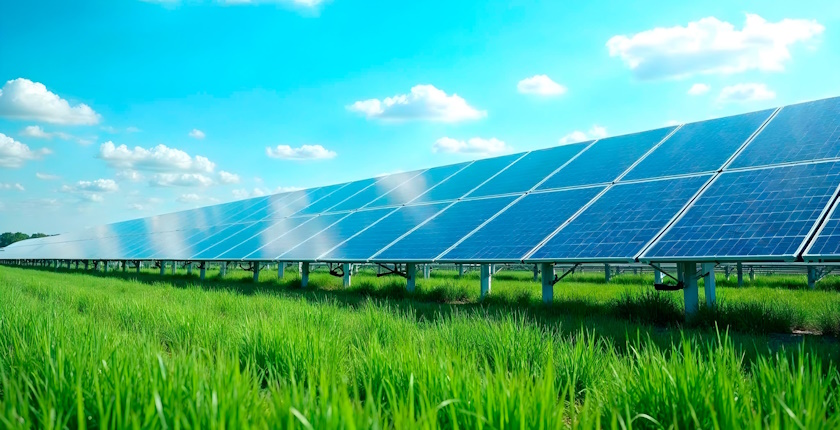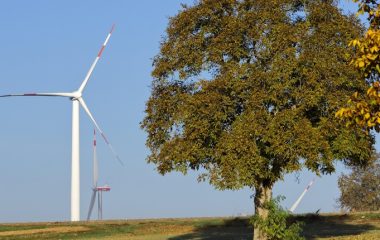
Photo: Freepik
With 585 GW of capacity additions, renewables accounted for over 92.5% of power expansion globally in 2024, the International Renewable Energy Agency (IRENA) said. Solar power and wind dominated again, as did China. The country contributed a stunning 63.8% in total, and 61.5% and 70.5% in the two technologies, respectively. It surpassed a 50% share in the world’s operational photovoltaic capacity.
In Southeastern Europe, eight countries had solar power expansion rates above the global 32%. Croatia almost doubled its PV capacity, while Turkey had almost as much online as all others put together.
Renewable Capacity Statistics 2025, released by the International Renewable Energy Agency (IRENA), show a massive increase in renewable power capacity during 2024, reaching 4.49 TW. The record 585 GW addition last year makes up a 92.5% share of the total, and the rate of annual growth hit an all-time high 15.1%.
Solar energy accounted for a tremendous 77.2% of all expansion. It grew by 452 GW in absolute terms, or 32%, to 1.87 TW. The technology topped 1 TW just two years before. Notably, Global Solar Council earlier declared that the 2 TW threshold of total photovoltaic capacity was reached in 2024.
IRENA said wind energy surged 11.1% (113 GW) to 1.13 TW. Hydropower achieved net growth of only 1.1% or 15.5 GW, to 1.43 TW.
It should be said here that the output from hydro and wind is three and almost two times higher, respectively, per unit of capacity than that from photovoltaics.
The bioenergy segment grew 3.2% to 151 GW, while geothermal added 2.5%, reaching 15.4 GW. As for pure pumped storage (excluding the facilities with dual use), a technology essential for balancing intermittent sources, the capacity increased by a neglectable 0.4%, to 142 GW.
China still eclipsing rest of world in expansion in three main renewables technologies
Solar and wind energy continued to dominate renewables capacity expansion, jointly accounting for 96.6% of all net additions.
“Renewables renew economies. But the shift to clean energy must be faster and fairer – with all countries given the chance to fully benefit from cheap, clean renewable power,” said United Nations Secretary-General António Guterres.
Indeed, the picture would be completely different without China. It is by far the strongest force in the sector, including the production of equipment for renewable electricity plants.
At the current pace, the world would come up 0.8 TW short of the 2030 climate-related renewables target
China accounted for 63.8% of last year’s added capacity, 70.5% of wind power and 61.5% of photovoltaic systems. It boosted its hydropower fleet by 14.4 GW, a whopping 93% of the total, to 436 GW.
The country’s overall renewables capacity soared 25.7% to 1.83 TW. The wind power item increased 18.1% to 522 GW and the installed capacity of PV systems spiked 45.6% to 888 GW. It means China now hosts more than half of the world’s solar power!
Maintaining the overall growth rate in renewables registered in 2024 would bring the global capacity to 10.4 TW by 2030. It would be 0.8 TW below the target for keeping global warming at a maximum 1.5 degrees Celsius.
Turkey boosts PV fleet by 76% to 19.9 GW in 2024
Countries in the region that Balkan Green Energy News tracks mostly achieved stellar progress in photovoltaics, while other segments generally stagnated.
Turkey is undisputed in solar power – growing 76% to 19.9 GW, while all others had almost 22.5 GW put together last year. The wind sector was solid, rallying 9.9% to just under 13 GW. Of note, Serbia’s wind power capacity growth, 18.4%, was the only one above the global rate. Its total reached 604 MW.
Eight countries in Southeastern Europe beat the world’s average in the expansion of photovoltaics last year, according to the new statistics.
After Turkey, the biggest solar power capacity, 9.3 GW, and absolute increase, 2.58 GW, is in Greece. The country registered a 39% growth.
In percentage terms, Croatia is the first in the Balkans, with 86%. It had 860 MW of solar power online. Romania’s capacity jumped 57% to 4.7 GW. Bulgaria added 1 GW, or 34%, reaching 3.9 GW. Slovenia hosted 1.31 GW of solar power at the end of last year, increasing it by 27%.
North Macedonia grew 65% to 833 MW and Cyprus increased its PV fleet by 25% to 724 MW.
The remaining markets are all near the bottom of the list in Europe in solar power capacity. Albania had 307 MW in operation, advancing 48% year over year.
The update shows Serbia at 241 MW or 22% more than one year before. Montenegro had 30 MW, compared to 17 MW in 2023. Bosnia and Herzegovina remained at 212 MW and Kosovo* was stuck at 20 MW in the report that IRENA published, indicating a lack of new data.


















Be the first one to comment on this article.